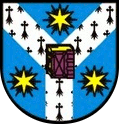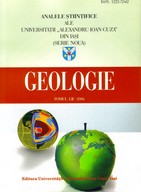
English title
- SERIA
GEOLOGIE (AUI-G) - |

|
| Log in New account |
| Home | Main Page | Guide for Authors | Peer Review | New Articles | Events | Archive | Index | Contact us |

|
Article A COMPARATIVE STUDY ON THE REMOVAL OF URANYL IONS FROM ARTIFICIALLY ENRICHED RADIOACTIVE WATERS USING CLAYS FROM ROMANIA
DOINA HUMELNICU - „Al. I. Cuza” University of Iași, Faculty of Chemistry, Inorganic Chemistry Laboratory, Carol I-11 Bd, Iași, 700506, Romania ROMEO IULIAN OLARIU - „Al. I. Cuza” University of Iași, Faculty of Chemistry, Analytical Chemistry Laboratory, Carol I-11 Bd., Iași 700506, Romania CECILIA ARSENE - „Al. I. Cuza” University of Iași, Faculty of Chemistry, Analytical Chemistry Laboratory, Carol I-11 Bd., Iași 700506, Romania MIHAELA BERTESCU - „Al. I. Cuza” University of Iași, Faculty of Chemistry, Analytical Chemistry Laboratory, Carol I-11 Bd., Iași 700506, Romania BETY DENISSA BURGHELE - „Al. I. Cuza” University of Iași, Faculty of Chemistry, Inorganic Chemistry Laboratory, Carol I-11 Bd, Iași, 700506, Romania View abstract as pdf file | View full article as pdf file Abstract: The present work evaluates the results of the experiments performed with three different clay minerals from Romania (Nereju (N) - Vrancea County, Valea Chioarului (V.C.) – Maramures County and Marsid (M) – Salaj County), so as to establish their potential to be used in the treatment of radioactive wastewaters. The sorption behaviour of uranyl ions from artificially enriched radioactive waters samples on clays sampled from Romanian regions has been studied, in the absence of any ionic competition, as a function of the contact time, effect particle size, temperature and concentration of the radioactive solution. Thermodynamic parameters, the Gibbs free energy, enthalpy and entropy were also calculated. The positive values of both ΔHo and ΔSo and the negative value of ΔGo indicate an endothermic and a spontaneous adsorption process, respectively. Out of all three clay types, the one sampled from Masid (Salaj County) is the best one as far as the purposes of the present study are concerned. Keywords: uranyl ions, clays mineral, removal of uranyl ions |
copyright © 2024 Department of Geology |